Painting to Achieve a Peeled Look
How to paint a locomotive to appear as though the previous owner's paint is starting to show through.
-Compiled by Josh Baakko, photos and model by Joe Napolitano (@_conrail_ on Instagram)
Recently Joe shared some photos of a D&H GP38-2 he modeled in HO scale. This particular unit was originally owned by Lehigh Valley, and was hastily repainted in the "blue dip" version of Delaware & Hudson's paint.
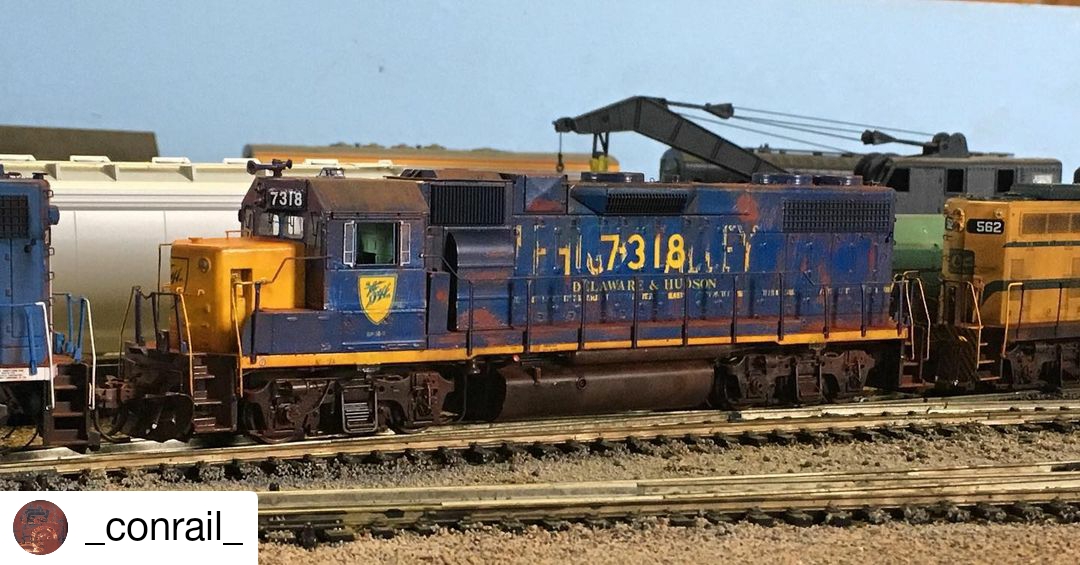
Through it's life with D&H the unit wore a few variations in paint. Joe chose to model the blue dip scheme, but after the paint had worn through exposing it's late Cornell Red. Joe's prototype can be found here: http://rrpicturearchives.net/showPicture.aspx?id=487182
Read on to see how he accomplished this unique paint.
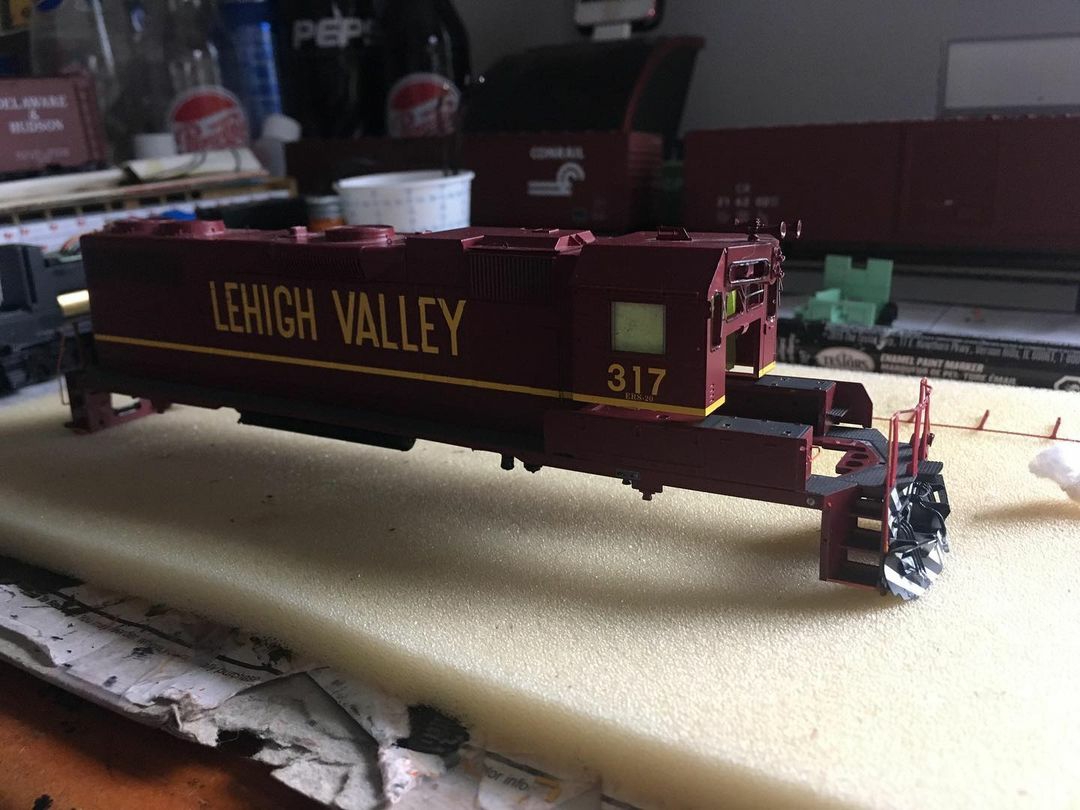
Step 1: Joe began with a factory decorated Lehigh Valley GP38-2. He torn the unit down to it's bare shell, removing any details he did not want to paint blue. This included separating the shell from the chassis, removing the cab to remove the windows and interior. Joe also removed the handrails, as they would be in the way for later work.
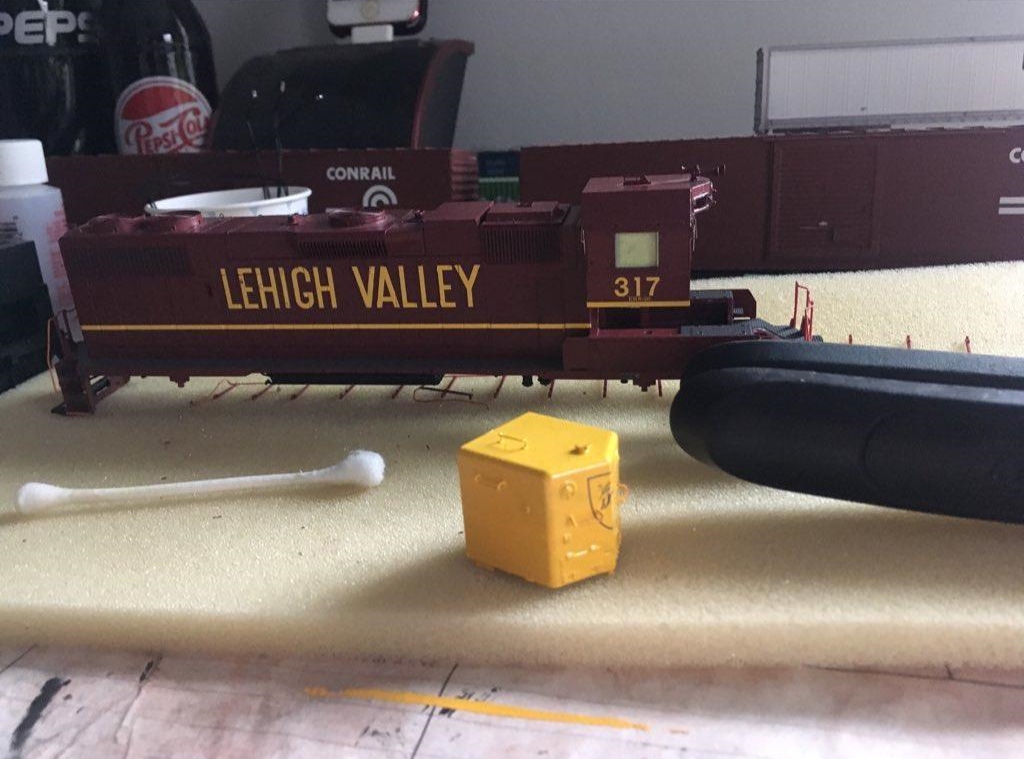
Step 2: Joe separated the nose as shown above. The nose was subsequently painted yellow with Testors Yellow paint, and decaled for D&H. This can then be set aside for assembly and weathering later. At the same time Joe sprayed the sill of the locomotive yellow, after drying he masked the yellow sill, in preparation for the blue.
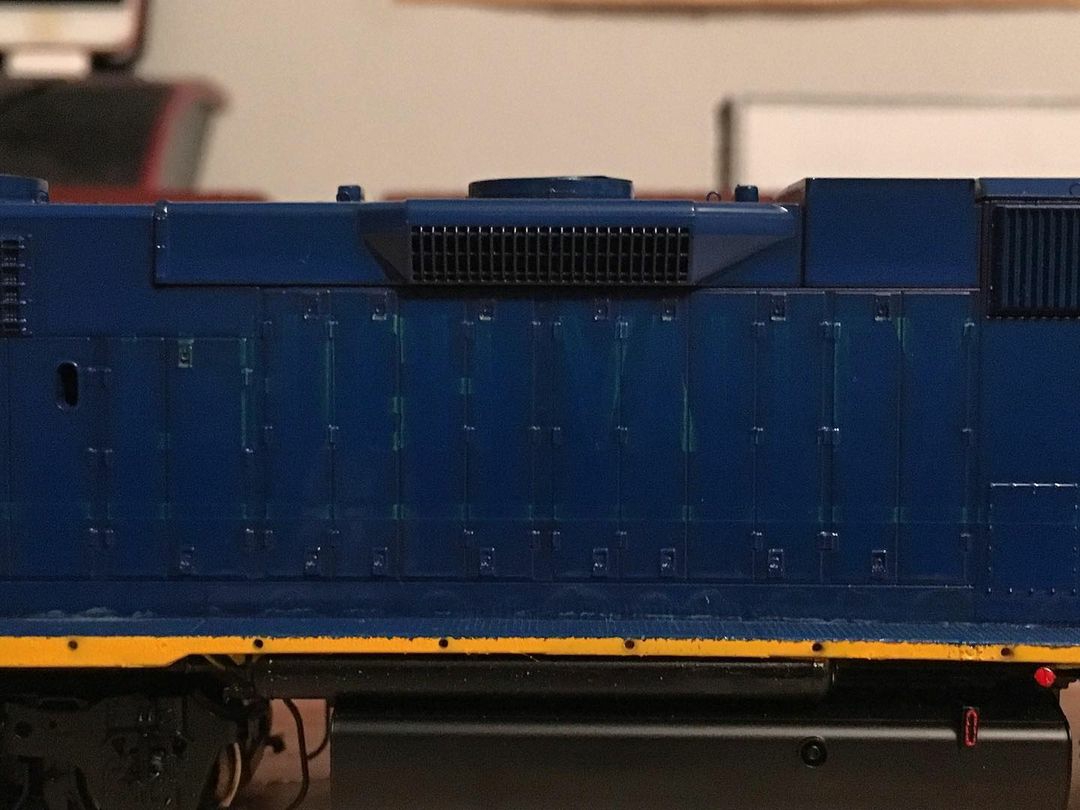
Step 3: Joe then repainted the shell with Testors Dark Blue, sprayed on in a thin layer. It is important to build up this layer of blue paint of the Cornell Red slowly, and in thin layers. Make sure to not provide 100% opaque blue, to allow the Cornell Red to show through.
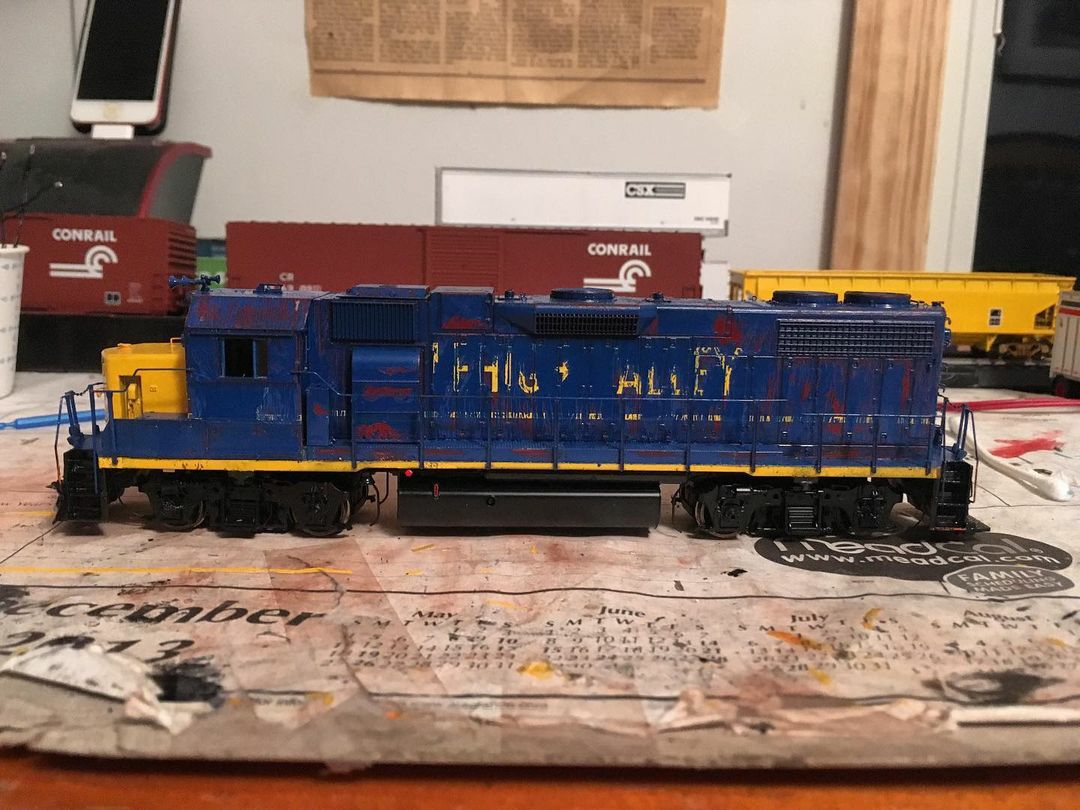
Step 4: As show above, Joe started to remove some of that lightly sprayed utilizing a cotton swab and 70% Isopropyl alcohol. Dip the swap in the alcohol and rub it on the Blue paint where you want the Red to show through. Using a hobby knife, Joe scratched the Blue paint off where it had been softened by the alcohol. Joe then soaked up the excess alcohol and chipped paint with a clean swab.
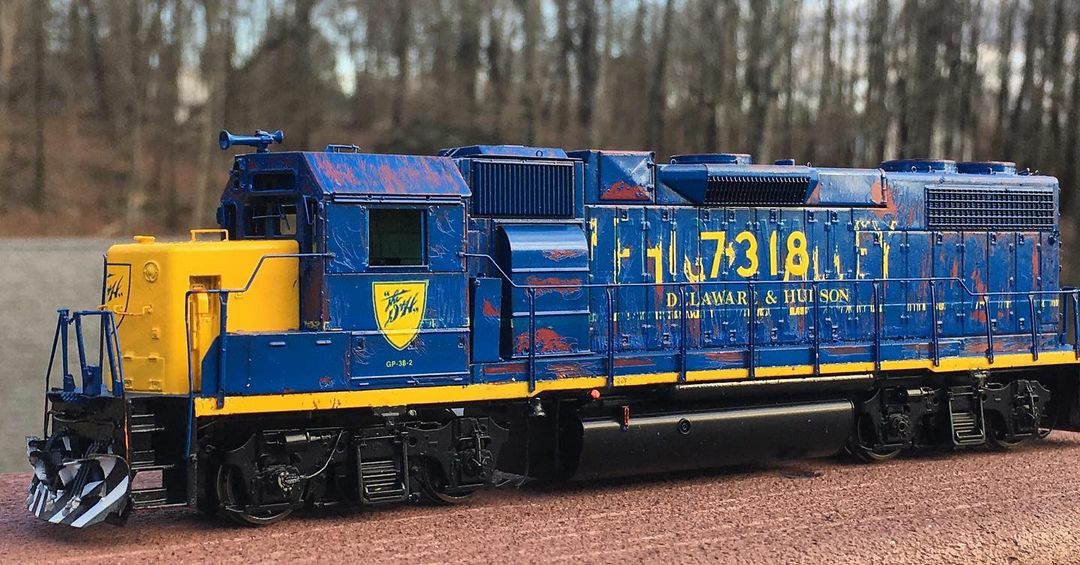
Step 5: Joe then proceeded to decal the locomotive over his newly peeled blue paint, replicating the look of the prototype. He also painted the handrails blue, with the ladder portion of them painted yellow.
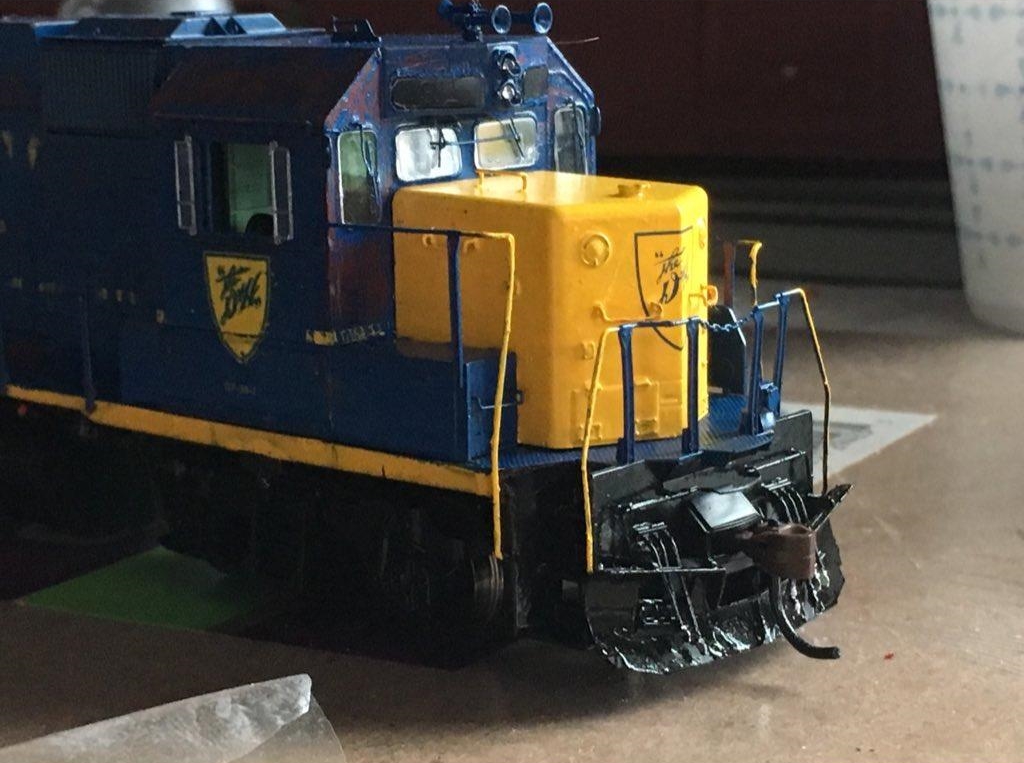
Step 6: With the handrails painted and installed, and the brighter yellow nose installed, Joe then dullcoated the locomotive in preparation for weathering.
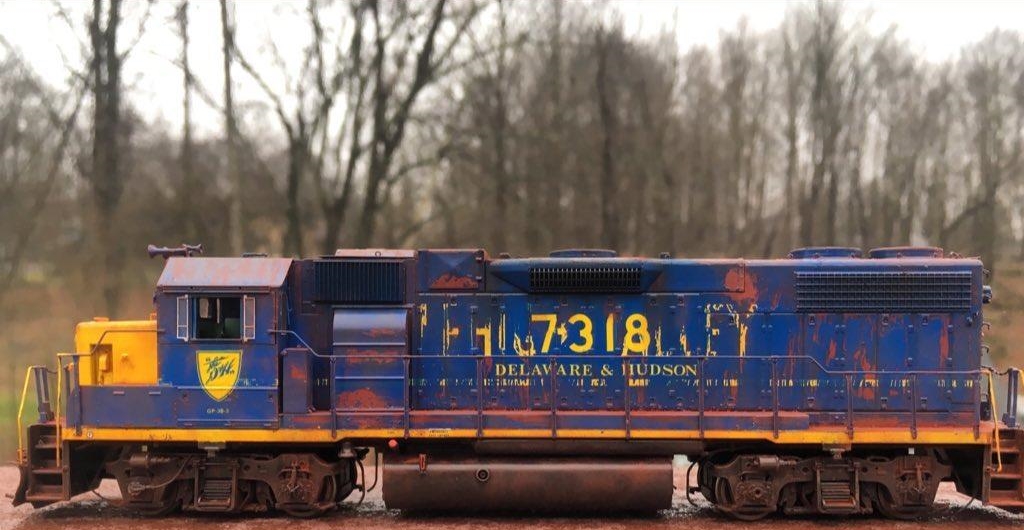
Step 7: Joe used various shades of pastel weathering powders to enhance the aged look of the locomotive. In addition to the heavy blue paint peeling, the unit acquired lots of road grime, and more subtle paint wear.
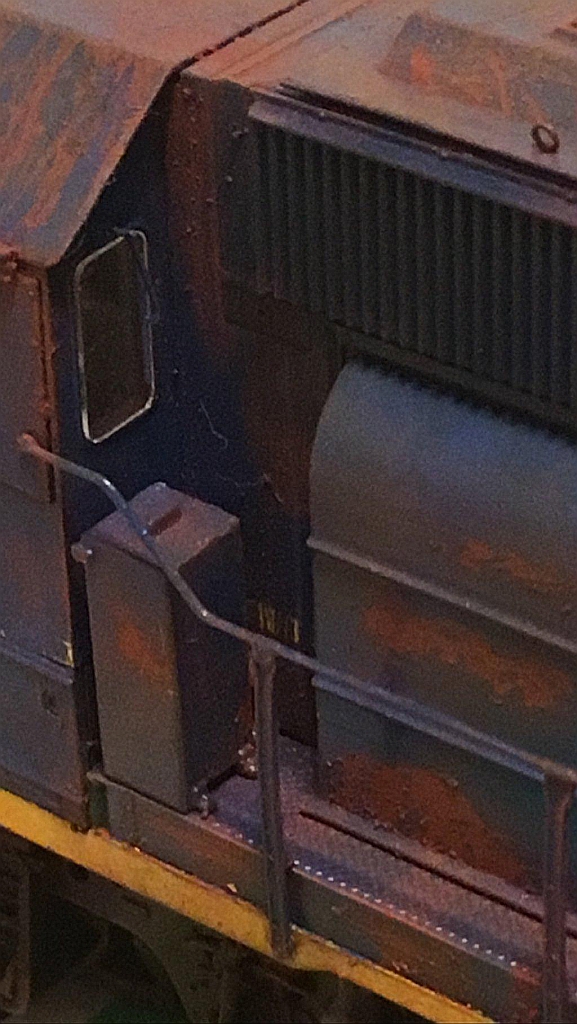
Final close up view of the weathering and blue paint wearing to expose the red.
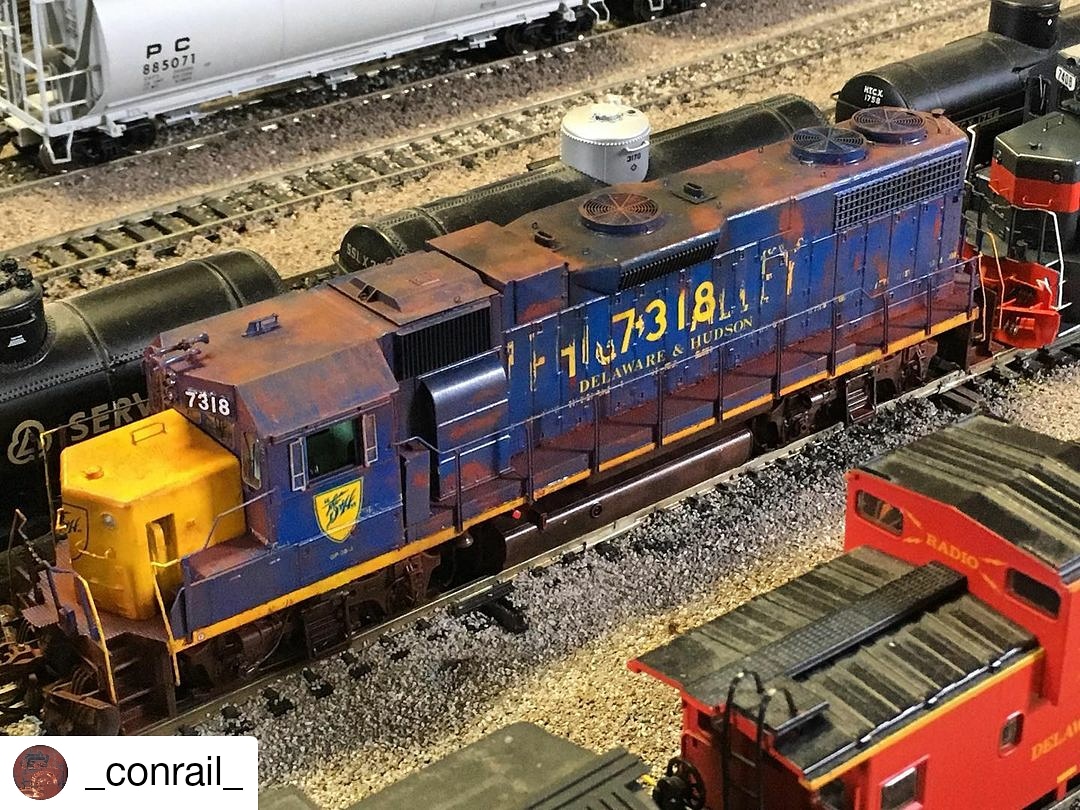
Completed unit on Joe's layout, ready for service.
© 2020, Josh Baakko, Photos and modeling by Joe Napolitano, https://www.modelrailroadtips.com

